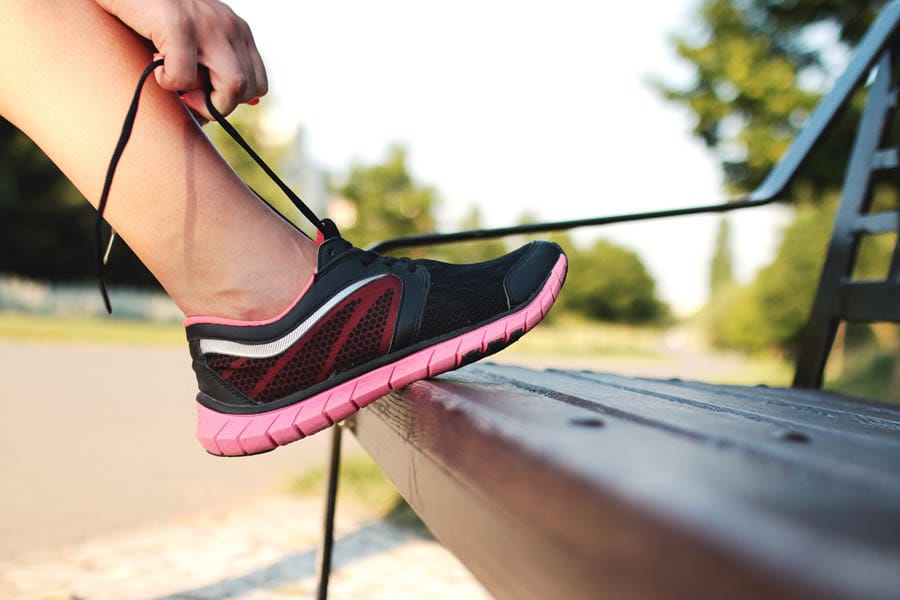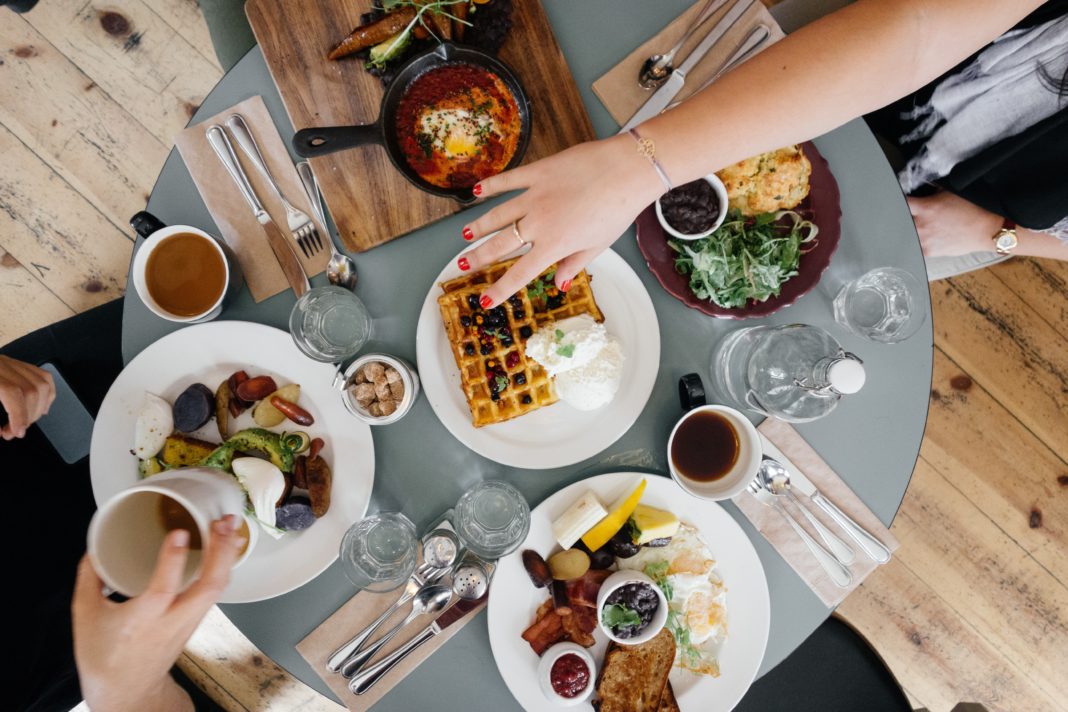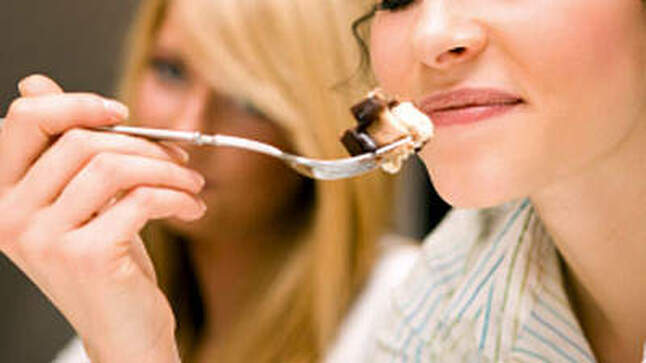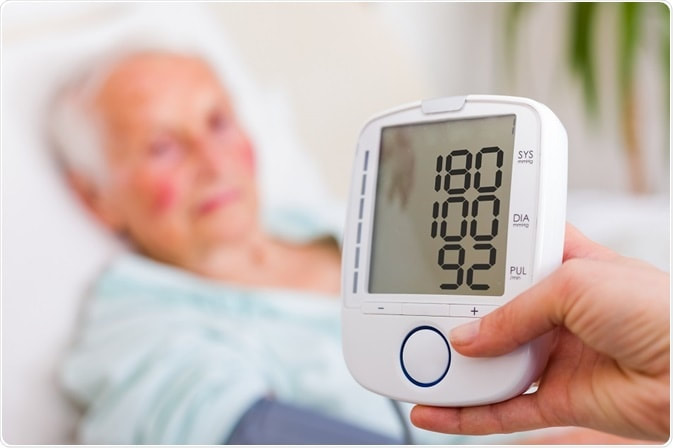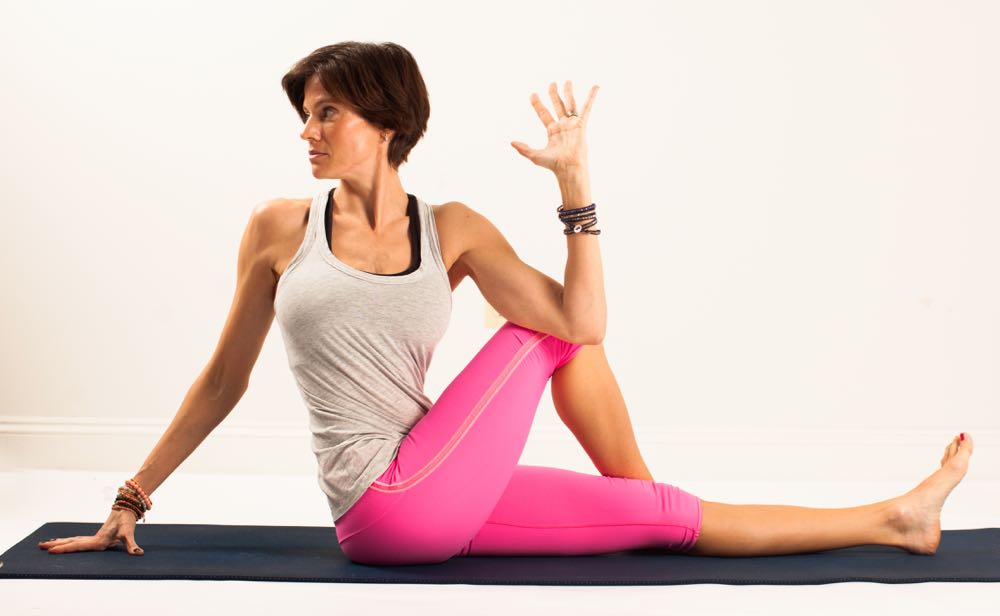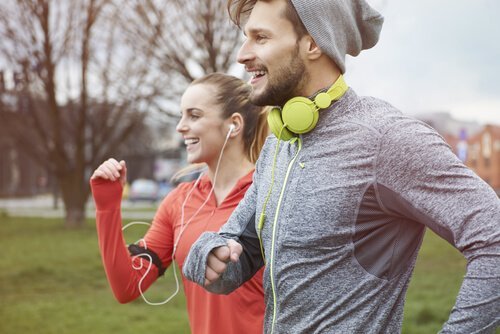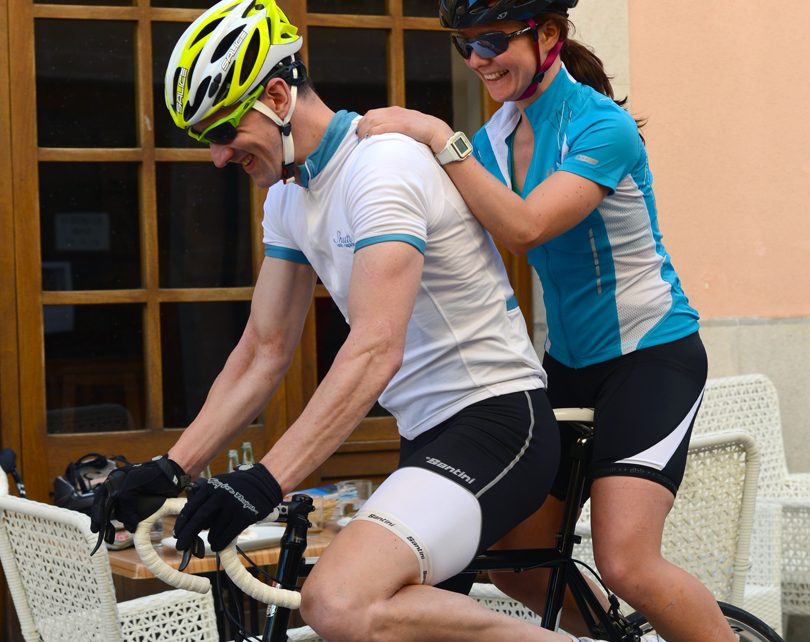|
Not a vegetable but conspicuously placed among them, mushrooms are a blessing in disguise. They provide much of the same nutrients as vegetables apart from nourishing us with the benefits of meat, beans and grains. Low in calories, sodium, cholesterol and fat and gluten-free these have been given a ‘superfood’ status owing to their different benefits. Fitness and health experts recommend adding mushrooms as a regular part of a vegetarian diet. Know more about mushrooms and learn to differentiate between the healthy and the poisonous ones with the help of tips from the website www.firsteatright.com. Soft when cooked these delights can be easily consumed by older adults too. Moreover, we’ve heard about exercise and brain activation to keep yourself safely away from cognitive impairment and diseases such as Alzheimer’s. What if you are blessed enough to reduce the risk of mild cognitive impairment by adding mushrooms as a regular part of your diet?
Grooming Your Brain in a Better Way Mushrooms have become an indispensable ingredient in various cuisines around the world, nutritious and full of antioxidants. A new study has come up with the fascinating fact that a unique antioxidant present in mushrooms can have a protective effect on the brain. Researchers have come up with the fact that seniors who consume more than two standard portions of mushrooms every week are at a 50% reduced risk of suffering from mild cognitive impairments (MCI). One portion is 3/4th cup of cooked mushrooms that weighs about 150 grams and two portions is about half a plate. The study was based on more than 600 Chinese adults over the age of 60 whose diet and lifestyle were monitored from 2011 to 2017. MCI is somewhere in between mild cognitive decline and dementia. Individuals with MCI show signs of forgetfulness, memory loss and decline in skills such as language, attention and visuospatial abilities. The major difference between MCI and other serious forms of dementia is that MCI does not affect daily activities or impair living as seen in Alzheimer’s or Parkinson’s. When that’s the case, the researchers tried to gauge the brain health of the participants with neuropsychological tests that can measure various features of a person’s cognitive abilities. As the research was done in Singapore, six mushrooms that were common to the country-golden, oyster, shiitake, white button mushrooms, dried mushrooms and canned mushrooms-were taken up for study. Consuming any of the mushrooms is beneficial for cognitive skills and this invoked the researchers’ curiousness in the magic ingredient in these fungi that enabled decreased cognitive risk. And, their answer is ergothioneine (ET). ET is an antioxidant and an anti-inflammatory agent that humans fail to synthesize on their own and mushrooms are a versatile source of this nutrient. We’ve had studies previously showing that individuals with MCI had ET levels lower than the rest in the group and also studies revealing that decreased ET levels might be a risk factor for neurodegeneration. Hence, consuming mushrooms that help us increase ET levels in our body might promote cognitive health. Researchers say that certain other compounds such as bioactive compounds, dictyophorines, erinacines and scabronines might add additional value to cognitive health. Eat not one but two or more portions of mushrooms every week to sharpen your cognitive skills and stay away from neurodegeneration. The craze for marathons, walkathons and other similar events are climbing up the ladder as the world is becoming more and more health conscious. It is indeed a good sign! There are such events organized for creating awareness for various reasons-right from those such as health awareness, walk for a cause events, marathons that are arranged as charity events and so. The cause might be any but you become the boss of your health by participating in such events. Its usual to see people enrolling themselves into fitness classes for building up their stamina and expanding their activity schedules to improve their body fitness before participating in such events. Mind you, these are not child’s play. While a 10-kilometer or 15-kilomenter run might seem pretty easy there are ones such as the 50-kilometer events that need real stamina and fitness to complete them and achieve success. Do you want to improve your endurance and stamina? There’s a simple way out that’s healthy and wise.
Bringing in the Mediterranean Diet A small study done by a research team has come up with the valuable information that consuming a Mediterranean diet just four days before an athlete’s endurance exercise performance is sure to show positive results. The Mediterranean diet is one of the few diets that’s got the approval of the majority of health experts for its nutritional benefits. Mediterranean diet is an umbrella term that includes eating patterns of all those people who live in countries alongside the Mediterranean Sea. A typical Mediterranean diet comprises of high consumption of fruits and veggies, olive oil occupies a central place in the diet, dairy, fish and poultry are consumed in limited quantities, nuts are taken in moderation and there is minimal consumption of red meat, wine, trans and saturated fats and sugar. Find an elaborate list of items that comprise the heart of the Mediterranean diet by visiting the website www.firsteatright.com. Its been shown that people following a Mediterranean diet are less prone to heart attacks than those following a Western diet but this is not 100% due to the diet alone. Lifestyle factors too play a role in defining the overall health of a person. Western diets are usually composed of scarce consumption of fruits, vegetables and minimal-processed oils, increased consumption of trans and saturated fats, dairy, refined sugar, sodium and processed foods such as burgers, French fries and baked goods. Whereas, the foods included in a Mediterranean diet contain antioxidants and nitrates and are said to have high anti-inflammatory properties, all of which help in improving performance of endurance athletes. So, when a person follows a Mediterranean diet, he/she can see a definite change in exercise performance immediately or within a few days. This made a team of researchers start thinking over the possibility of including the nutrients that are a part of the Mediterranean diet in the daily meal plan of individuals and look for changes in performance. The research team included seven women and four men in their study. All the participants were given the Mediterranean diet for four days and on the fifth day they were recommended to run on the treadmill for 5 kilometers. Nine to sixteen days after this, the participants were fed on a Western diet for another 4 days and were asked to take the treadmill test on the fifth day. The researchers also wanted to test the effect on both these diets on anaerobic exercises such as cycle test or handgrip test. While the study could give us a positive hope with its findings that following a Mediterranean diet helped people run 6% faster on the 5km treadmill test compared to their output after following a Western diet, neither of the diets had any effect on anaerobic exercises. While we can be happy that following a Mediterranean diet improves performance in as little as four days, we should also be aware of the fact that these improvements are lost soon after switching over to a Western diet. This creates an awareness among all of us reminding that the effects last long only when there is long-term adherence to the dietary pattern. The research team came to the conclusion that a diet that’s good for health is definitely good for exercise performance too.  The Older you Grow, the More you Yearn for a Better-half The Older you Grow, the More you Yearn for a Better-half Marriage has its perks and downsides. You get someone to spend quality time and share your feelings. At the same time an unhappy relationship can multiply stress levels, create ill-feelings and cause unhappiness. Marriage is not a cakewalk and many people genuinely try to make it work at any cost. An affectionate spouse not only adds peace, joy and happiness in the relationship but also promotes your well-being and the urge to take care of yourself. Vow to Stay Together Forever A new study has found that marriage lowers the risk of heart disease. Published in the journal Heart, the new study report analyzed more than 30 studies involving over two million people probing on their marital status and heart disease risk. While 80% risk for the disease depended on genetic or lifestyle factors such as high blood glucose levels and diabetes another 20% risk for it was influenced by social factors and personal relationships. This doesn’t come as a surprise because there are other studies supporting the fact that emotional well-being affects heart health greatly and physicians must evaluate it to determine the risk of a heart problem in patients. Stress is a critical risk factor for heart health and its causes might be many-financial strains, health problems, death of a loved one or loneliness. Loneliness is often a problem in people who have lost their spouses or live alone either because they are divorced/separated or they have never been married. Emotional well-being is far more than having money to buy things or having a high-paid job. Stay free from stress and stay positive with the help of practical tips from the website www.firsteatright.com. You need people to share your feelings and love you, and marriage gives you that. Results of the study showed that:
Heart & Soul of Marriage While it sounds goods when someone tells you that marriage improves heart health and cheers you on one of those gloomy days when you suffer from a strained relationship, we need to understand what factors stand behind such a proposition! Maybe the spouses can judge any deterioration to their partner’s health, respond quickly in case of any emergency and ensure that their partners follow a heart-healthy routine. Both the husband and wife care for each other’s well-being and it is human nature to eat well and look after ourselves when there is someone dependent on us. Living alone negates any of these needs according to the individual and he/she takes least pain to eat healthy food or exercise regularly. The feeling of ‘For whom should I take care of myself?’ sinks within the individual which acts as the root cause for many problems. Also, when both husband and wife work their income increases by 2-fold and they are better equipped to afford for proper healthcare needs. But it is also possible that when marriage doesn’t work out between two people and they get divorced they experience stress that can worsen heart health and create other health problems. So, it is unlikely that we recommend people to get married to live heart-healthy but at the same time the advantages should also be considered. Physicians too should review marital status while considering likeliness of heart disease.  Being Mindful is a Part of Eating Intuitively Being Mindful is a Part of Eating Intuitively Stop the calorie calculations, limiting the portion sizes and differentiating food as ‘good’ and ‘bad’. Start eating what you want to eat, how much ever you want to eat and whenever you want to eat. Isn’t this a dream come true for many of us? It makes us tear away the layers of dieting principles, get far off from intermittent fasting routines and care only about what we would like to eat. This scenario is not imaginative and forms the basis of what we call as ‘intuitive eating’. Ditch the Deal Early man had no concept of dieting as finding food was a monstrous task by itself. He ate whatever was edible whenever he found it. There was no limit to his portions and he ate until his stomach was full. This forms the basis of intuitive eating too. Intuitive eating is eating whatever you want whenever you want to. Its just the opposite of dieting-no calorie measurements, carb counting, judging a food for its calorie or nutritive value or measuring waistline every day. It does seem weird after all the meticulous calorie calculations carried out for designing the perfect diet chart for your requirement-weight loss, weight gain, diseases or disorders. Born unto this world, we learn the art of eating, to eat when we are hungry and to stop when we are full. The clean plate club sometimes disrupts our judgement of these cues and sometimes, growing up can also change them. This is where intuitive eating comes to our rescue. While it might not be easy to understand and pursue, fixing upon one thing in your mind that intuitive eating is just the opposite of the food habits you have been taught will help you get out of the challenges of dieting. Intuitive Eating Ideologies Intuitive eating works on certain principles and they include rejecting the idea of a diet, learning to read hunger and fullness cues, knowing your satiety, never differentiating food as good or bad, not succumbing to emotional hunger, respecting your body and realizing that each of us have a unique physique whose structure cannot be changed, exercising regularly, refraining from tracking fitness updates via apps or trackers, realizing that no food is off limits and appreciating a healthy body. This is a concept that bans the idea of dieting and looks into each food type rationally helping people differentiate between physical and emotional feelings. Rather than eating owing to emotions such as happiness, sadness, joy or anger intuitive eating helps you eat based on the needs of your body. It brings in a routine where we eat because we are hungry and not because the clock shows that its time for breakfast or lunch. Also, please let go of the feeling that intuitive eating is a platform to enjoy as much food as you want-it does involve being mindful of what you eat. The advantage offered here despite the idea of mindfulness is that intuitive eating doesn’t restrict your mind from anything that you desire. You don’t feel guilty after eating a piece of cake or feel bad after consuming a milkshake rather it helps you enjoy the deliciousness of the food surrounding you. Dieting throughout the year or restricting yourself from all your favorite foods will not work out in the long run. It tires your mind and body, puts you into depression and anxiety and even isolates you from social gatherings and parties as these involve high-calorie foods and finally, might push you into eating disorders too. Good For All? Intuitive eating too needs some planning and a certain level of execution. For instance, people with diabetes, blood pressure, heart problems or pregnant women cannot blindly follow the ideologies of this eating form and they need to check it up with their physician to make slight variations in their diet to suit the health requirements of the body. We don’t have anything called as an ‘ideal’ diet and it all depends on the individual. Even when two different people have similar nutrient requirements, weight ranges and height, the diet prescribed would definitely be different. Even if the diet prescription remains the same hypothetically its effect on the individual varies greatly. Intuitive eating also comes as an eye opener to parents who choose to remove certain food groups completely for some reason. The latest buzz about food trends and diets frighten many of us who finally result in removing carbs or fats completely off our diet plan. Also, intuitive eating might not be immediately suitable for someone coming out of an eating disorder (https://www.theatlantic.com/health/archive/2019/02/intuitive-eating/583357/) as these individuals’ hunger and satiety cues don’t fall into place correctly but are ruled by their opinions on the different foods that they eat. Hence, a proper meal chart would best serve to bring these individuals to normal eating routines slowly after which intuitive eating might be introduced. Mind you, if someone tells that intuitive eating is the best way to lose weight, they are not talking about eating according to your intuition but once again trying to force you into dieting. Anything can happen with intuitive eating-weight might increase, decrease or stay unchanged. Studies have shown that intuitive eating proves to be less effective as a weight loss measure while certain studies do show that it does improve the body image of young women. So, intuitive eating might be the best course to be followed once you reach an ideal body weight with the help of nutritionists and dietitians at www.firsteatright.com. By then, you realize your hunger and satiety cues, refrain from eating for emotional comfort and start realizing about your own body. While we feel proud that intuitive eating is the latest trend if you think deeply it’s the way infants and children eat. They eat when they feel like eating, choose whatever they want to eat and stop when they feel like stopping. Actually, we are all born with an inbuilt capacity for intuitive eating. Why don’t we go back to the basics and get it sorted out? References The Latest diet trend is not dieting: https://www.theatlantic.com/health/archive/2019/02/intuitive-eating/583357/ Intuitive eating: How eating what you want can be better than dieting: https://www.usatoday.com/story/life/2019/03/22/intuitive-eating-how-eating-what-you-want-can-better-than-dieting/3163410002/ Is intuitive eating the anti-diet to end all diets? https://www.independent.co.uk/life-style/intuitive-eating-anti-diet-fads-emotional-healthy-food-hunger-fullness-exercise-a7560201.html Intuitive eating leads backlash against diet culture: https://www.bbc.com/news/uk-northern-ireland-47404019 We seek greener pastures elsewhere while the prized possession remains right in front of our eyes. Happiness cannot be sought elsewhere but it is in our hands to decide how we lead our life. Money can buy many things in life-clothes, food, home and even comfort keepers who give company to the lonely and elderly in return for money-but one must always remember that nothing can buy love, happiness and joy in life. Happiness isn’t going on a grandeur vacation or buying expensive jewelry but the way you treat yourself in life, the efforts that you make in every situation and how rapidly you can lighten up a serious or dull situation. Human health includes both mental and physical well-being. A fit body without a fit mind is valueless as it is the mind-body coordination that helps an individual achieve great things in life.
Old Wine in a New Bottle Exercise is advantageous for the body and there are innumerable studies establishing this fact. What’s new is that physical activity can also boost your happiness, according to a study. It is natural for many people to depend on exercise in the form of a brisk walk, jog or running on the treadmill to overcome stress, anxiety or a bad day at work/home. In short, exercising helps to stave off negative mental health and this concept triggered a group of researchers to analyze whether the same exercise could boost positive mental health too. This group reviewed 23 studies on happiness and physical activity of which 15 studies showed a greater association (directly or indirectly) between exercise and happiness. The remaining 8 studies showed inconclusive and inconsistent results. All these studies involved a variant population including adults, elderly, adolescents and children. Comparison of studies showed that compared to inactive people the degree of happiness was 20, 29 and 52 percent higher for people who were insufficiently active, sufficiently active or very active respectively. The frequency and amount of physical activity decided the strength of relationship between physical activity and happiness. While slight differences in the amount of physical activity performed caused variations in happiness quotients the studies showed that happiness levels remained the same above the 150 minutes of activity performed each week-it was the same at 150, 300 or above 300 minutes of weekly activity. Different studies were an eye-opener on different things. One study showed that normal weight people who exercised once a week were 1.4 times happier and overweight people were 1.5 times happier. One other study showed that adolescents who exercised twice a week were happier than those who exercised once or less than once a week. Three studies that looked at the relationship between happiness and activity between older adults came to the conclusion that-exercise paved way for happier adults; total exercise minutes every week was positively associated with happiness and happiness was affected by an individual’s health status and social functioning. What the researchers failed to analyze was the type of exercise that granted maximum happiness, but general analysis showed that aerobics, stretching and balance movements were helpful than any other exercises comparatively. Building Blocks to Happiness Exercise helps the body stay away from depression and anxiety by preparing the body to deal with stress in a subtle way. Our body’s activeness quotient determines our ability to deal with stress. The adrenaline rush you experience after running or exercising might be due to elevated endorphin levels but there are no strong studies on this. Different ways exist to deal with stress and many of them are defined in the website www.firsteatright.com. Having a bad day at work- head directly to your gym after work; Financial crisis? Go for a group exercise class; Faced a terrible day at school? Play a game of basketball or do Zumba. Minimizing negativities in your brain and maximizing positive feelings are crucial for mental well-being. Do it with exercises and have a happy time.  Meditate in Motion! Meditate in Motion! In a phase of life where we don’t have time to eat or sleep, how do we fit in meditation in between our busy schedules? Even if we squeeze in a dedicated timeslot for practicing meditation which would be the type of meditation that would provide us with the best possible effect on our body? Surreal Peace & Tranquility Stress is inevitable and we need to workout on our personalized ways to combat stress. What would work favorably for one person might not be good enough for another person. Choosing the right way for fighting against stress goes a long way towards well-being. Meditation and mindfulness are two practices that helps many of us fight against stress, high blood pressure, improper sleep routines, cardiovascular diseases and overall wellness. Meditation basically involves focusing on some image, sound or word that can release stress and bring peace and rejuvenation to your mind and body. Stress releases hormones called adrenaline that helps the body show reflex actions safeguarding it against dangerous situations. While this is positive, repeated release of the stress hormone takes a toll on our health for which practicing meditation is of utmost importance. Ready to Meditate? Different nutrient plans are dispensed for different purposes such as weight loss, diabetes and cancer; different exercises are taught for toning or losing weight in different body parts and different lifestyle routines are recommended depending on the shift schedule or circadian rhythm of individuals. When this is the case, how can we practice one type of meditation to solve all of our problems? We have various types including even yoga and tai chi which are forms of meditation in motion. Analyze each of the types given below and choose the one that would best suit your purpose:
Relaxation: This type of meditation is like a body scanner which helps you scan different parts of the body for tension and relax it. You start by relaxing from one end of the body, for instance, your feet, and proceed towards the other end progressively and slowly working through the body. While most forms of relaxation meditation make people relax muscles by focusing on the body part some of them insist the individuals to imagine a wave that drifts over the body to ease off tension. This is the best form of meditation to attain calmness, ease tension, get sleep or in short, relax totally. Mindfulness: This is being in the present and staying aware of what happens to you currently. This is a form of meditation that can be practiced anywhere you are-when you are in the queue, seated at the physician’s clinic waiting for your turn or even at office. All you need to do is to simply notice your surroundings, what you see, hear and experience. This kind of meditation helps in improving memory, lessens emotional traumas, makes you feel better satisfied in a relationship and takes off negative emotions. Mindfulness has a lasting impact on the health and eating habits of a person as discussed at www.firsteatright.com. Transcendental: The ultimate goal here is to reach a notch higher than the person’s current state of being. The individual is taught to concentrate on a single work or a phrase throughout the meditation duration where he/she remains seated and breathes slowly. The mantra is decided by the guru based on several factors. Sometimes, the individual chooses his/her own mantra but this cannot be termed as complete transcendental meditation. One who practiced transcendental using a mantra taught by a guru is bound to experience mindfulness and improved spirituality. While many forms such as mindfulness can be performed even for a couple of minutes, transcendental requires complete 20 minutes to perform. Zen meditation: This is mostly learnt from an experienced Zen teacher as it involves several sets of steps and postures. People generally choose a comfortable place to sit down, breathe slowly and focus on their present thoughts without judgement. Though similar to mindfulness meditation this requires even more dedication and practice. The surprise element here is that meditation doesn’t simply involve sitting in a place, closing your eyes and practicing. It can also involve movement as in Tai chi, qigong (this is also called as meditation in motion) and yoga. Meditation is only an extra effort to improve your wellbeing and not a replacement for your medical therapies, eating styles and exercises. It is better to practice one or more forms of meditation, analyze what works best for you and continue practicing the chosen form thereon.  Forcing your Kid to Finish Off the Food? It’s Not Going to Help Forcing your Kid to Finish Off the Food? It’s Not Going to Help How about making our newborns and small infants obese as well? We have developed into a society that takes pride (sarcastically indeed) in nurturing obese/overweight citizens worldwide and the next step is to pass over this body weight identity to our younger generation as well. Even now, more than 25% of children aged between 2 and 5 years are said to be overweight/obese. This isn’t a shocking news given the fact that we feed what we eat. When its French fries, potato wafers and doughnuts that pass into our body as a snack we are bound to give the same to our kids. Even if we have a good intention of providing them with healthy fruits, vegetables and dairy how do you think they are going to respond to this act of yours? With a BIG ‘no’ indeed! Parenting Protocols Overweight/obese children are at an increased risk of developing type 2 diabetes, heart disease, High BP and other serious health problems. A chubby kid is lovable and adorable but that’s not all that we want from a kid. He/she must be active and healthy firstly. A dimple might be cute but a second chin is not! Just because your infant cannot speak for his/her own it doesn’t mean that you go on feeding him/her until the kid is overfull! C’mon parents, we have crossed those stages and we do realize how troubled we were by such acts. Don’t trouble your little one into eating all that you feed and blame your child later for overeating during adolescence. This is bound to happen because you have groomed them without helping them realize fullness and hunger signs during childhood! Be a responsible parent. Even a study says so! This study was set up with the sole task of understanding whether teaching ‘responsive parenting’ had the strength to prevent rapid weight gain during infancy and help the children grow in a healthier surrounding. Parents who are taught about responsive parenting respond to their kids in ways that suit their age and fulfill their needs. For example, parents are taught to recognize signs of fullness in children while they are feeding and stop feeding immediately. This is only a small example available from the ocean of things that are taught in this process. What the Study Says We have had previous studies that showed that responsive parenting was helpful in preventing weight gain in a baby’s first six months of life, reduced a child’s body mass index (BMI) and also improved the infant’s sleeping patterns. The latest study included 272 mother-infant pairs of which 232 could complete the three-year trial. The average age of mothers were around 28 years and they were randomly split into either of the two groups-responsive parenting and the control group. Mothers in the responsive parenting group were taught how to respond to their infant’s sleep, play, feeding routines and emotional tantrums while those mothers in the control group were taught about home safety. Every member in either of the group was met by a nurse in their respective homes on four different occasions during infancy and once during the child’s first, second and third year. Results showed that:
Conceived in India and now, ruling all over the world yoga has become a word synonymous with health. Anyone belonging to any age group can practice yoga and reap its benefits-it is not restricted only to our physical body but also offers a combined advantage over our body, mind and spirit. Yoga has got much more beyond the asanas (postures). It helps in bringing peace unto your body and to cherish well-being of thyself.
Being an ancient spiritual, mental and physical practice, the word yoga is derived from Sanskrit and means to join or unite- a union of the body and consciousness. When you dwell upon the popularity of this tradition you realize that its diversity and practical applications make it indispensable to humanity today. Believe me or not, yoga is for everyone-you might be a couch potato or a reputed athlete, a 70-year-old woman or a 5-year-old child, yoga has got something to offer for everyone. Yoga nowadays is practiced primarily for weight loss and health but it was not well into fitness during the early days. Yogis and others started practicing yoga to expand their spiritual energy using breathing techniques and mental focus. During the early 1920s and 30s yoga gained popularity in India for its different asanas and postured thereby attracting the attention of the West in a couple of years. One Tree, Many Branches Yoga uses the image of a tree with roots, branches, a trunk, blossoms and fruits where each branch of the tree represents a different yoga style-Hatha yoga (body & mind), Raja yoga (meditation & discipline), Karma yoga (negativity- & selfishness-free future), Bhakti yoga (devotion to channelize emotions & cultivate tolerance), Jnana yoga (wisdom & intellect) and Tantra yoga (rituals, ceremony and liberating oneself from relationships). Meditation too has tremendous advantages on the body when it is practiced regularly and to understand the best type of meditation that suits you, please visit www.firsteatright.com. Practicing yoga for weight loss has been predominantly happening everywhere and specific yoga poses for pregnancy are also being taught in the form of prenatal classes that help the carrying woman tune her body and mind for a healthy delivery. Stress is an inevitable part of each of us and doing yoga even for a couple of minutes daily frees our mind and body of stress. When we overcome stress, we experience peace and yoga is the best way to attain inner peace by calming your disturbed mind. Once you are calm and peaceful you start noticing good things around you and the goodness of the people present around which in turn helps in improving your relationship with your loved ones. Other advantages of yoga include improved energy, better flexibility and better postures, excellent intuition skills, better immunity and increased awareness of the things happening around us. Physical benefits of yoga include better metabolism, improved respiration, increased flexibility, cardio and circulatory health, weight reduction, protection from injury and better muscle strength and tone. International Yoga Day Realizing the widespread prominence and advantages of yoga, the United Nations proclaimed June 21st as the International Day of Yoga since 2015 to raise awareness worldwide of the many benefits of practicing yoga. The theme for this year is ‘Yoga for Climate Action’. On this day, there are several programs arranged throughout the world to commemorate the benefits of yoga and this has been happening with great enthusiasm every year. 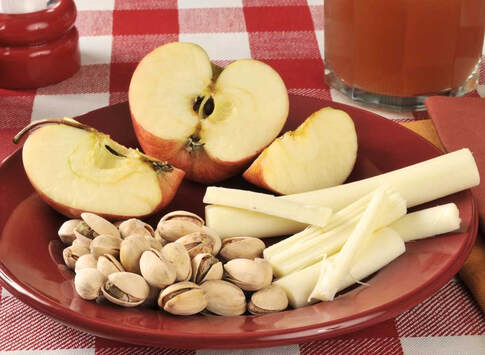 Healthy Carbs are Inevitable for Energy Healthy Carbs are Inevitable for Energy How many of you have heard about the story of two prisoners whose attitude towards things made their life better or miserable? If not, let me present it to you in a nutshell and this story is going to form the base for our attitude toward carbohydrates. There were two prisoners locked inside a cell which had a tiny window. One prisoner looked out of the window and was fulfilled with the sight of a wonderful night sky outside filled with stars. He called onto his cellmate and asked him to enjoy the same experience as himself. But alas, all that his mate could see were the prison bars. He could not look beyond them and enjoy the beauty that nature had to offer! You can either be a master or a prisoner of your attitude! Choose what you want to be! I feel most of us approach carbs the same way (seeing their disadvantages and not picking on their advantages) the second prisoner approached nature-seeing the bars instead of the stars. Fiber: A Complex Carbohydrate A fiber-rich diet has been on the list of every health professional, dietitian and nutritionist dispensing enriched suggestions to individuals. Fiber been associated with everything good-right from good health to avoiding chronic diseases. Even a study in the Lancet shows that people with a fiber-rich diet are at a 15-30% lower risk of death due to heart problems or any other problems comparatively. A diet rich in fiber also helps in controlling weight, reduce weight gain and high cholesterol and also avoid type 2 diabetes, colorectal cancer and coronary heart disease. But when I mentioned about carbs initially why are we suddenly talking about the benefits of fiber? Only because fiber is a type of complex carbohydrate. Sugar and starch are the other two types of carbs. I think by now most of you would have been able to find the analogy between the story of the prisoners and carbs-while we have been avoiding (or in fact cursing) carbs mostly during weight loss programs, talking only about the processed foods and baked goods rich in sugar and starch we have been missing out on the goodness of the fiber part! The Necessary Evil? Despite its bad rap, carbohydrates are inevitable for our health and dietary guidelines too suggest that carbs constitute of 45-65% of daily calorie needs. For example, if you take a 2000-calorie diet, 900-1,200 calories should constitute of carbs-healthy carbs. They occupy a prime role in your life supplying your body with energy, protecting it against diseases and also controlling weight. But what type of carb you eat defines your health. People have blindly been following different low-carb diets such as the Keto or Atkins diet that might help in weight loss but neither do you sustain the loss nor does it help you stay healthy in the long run. Most low-carb diets avoid including whole grains and also restrict the intake of fiber-laden fruits and veggies. Fiber-rich Carb Intake Bread, pastry and other processed foods are all carbs but any sane person would realize that eating them is not going to do your body any good. Natural sources of carbs include fruits, veggies, whole grains, legumes, milk, nuts and seeds which are all healthy and some of them are remarkable sources of fiber. Focus on consuming your carbs in the form of fiber for the benefit of your body. A latest research backed by WHO on the recommended daily amounts of fiber shows that consuming between 25 and 29 grams of fiber a day is sufficient. The study found that for every 8 grams of increased fiber intake the risk of death from coronary heart disease, type 2 diabetes and colorectal cancer reduced by 5-25%. When the fiber intake increased by 15 grams, rate of death, colorectal cancer and heart disease risk reduced by 2-19%. While it is not healthy to follow a low-carb diet if you have been doing so increase your fiber intake by choosing plant-based foods that contain high fiber. If you have been following a Mediterranean diet plan kudos to you as this kind of a plan focuses on including plant-based foods such as fruits, veggies, nuts, legumes, grains and seeds in abundant quantities. Get yourself a personalized diet plan that has all the macronutrients perfectly planned suiting your body type with the help of dietitians and nutritionists at www.firsteatright.com. For anyone whose diet is low in fiber, add them gradually to your diet as suddenly overpowering your food with fiber can lead to constipation, diarrhea or gas. Give your body sufficient time to adopt to the changes. Introduce a piece of fruit for breakfast, one portion of fruit and one portion of veggie for lunch and so on. Ensure to drink plenty of fluids in between to help the fiber move through the body. Brown rice, instant oatmeal, whole-wheat pasta, raspberries, green peas, chia seeds, black beans and split peas are all great sources of fiber apart from your regular carrots, beans, apples, melons, kiwis, etc. Potatoes are the only exception as they promote weight gain. You needn’t refrain from eating potatoes but minimize their consumption. Blood pressure might be a common problem faced by the major section of the society. So its not surprising when people don’t take it seriously as it ought to be treated. We do know that all of us love things that are unique and give importance to those stuff that are uncommon. Platinum is valued as it is a rare metal, white tiger is a treat to the eye as it is limited in number and people just wait for the Kuriji flower that blooms only once in 12 years. Likewise, we might value cancer and dementia more than blood pressure as they are rare occurrences compared to blood pressure. The irony is that, people know more information about these diseases than they know about BP.
In a recent survey conducted by the American Heart Association (AHA) researchers found that almost 80% adults who have high BP levels weren’t regularly checking it as instructed. All the more, almost half the Americans were unaware of what number is defined as high blood pressure. As per AHA recommendations it is advisable to check your blood pressure levels on a daily basis, especially at the same time of the day every day. There are also various do’s and don’ts while checking your BP levels such as refraining from sitting cross-legged, standing and taking your BP measurements and so on. For a curated list of these do’s and don’ts you can quickly log on to www.firsteatright.com. A Yes or A No? The AHA survey that covered more than 1000 people revealed that approximately 38% admitted that they were diagnosed with high blood pressure whereas 18% couldn’t remember whether they had been diagnosed with high BP levels ever. The guideline defining high BP levels have been changed from 140/90 mmHg to 130/80 mmHg since 2017. So, is this a shock to most of you reading this article too? Then, you need to update yourself immediately! The survey also revealed that 64% people couldn’t figure out the exact numbers that constitute elevated blood pressure levels. The researchers questioned these participants on their knowledge, attitude, demographics and behavior relating to high blood pressure extrapolating it as the representation of the entire people of the nation. Among the 1000 participants that included both, those with and without high blood pressure, almost 55% participants who were at high-risk commented that they had no problems of being at an increased risk of heart attack. Among those who were confirmed with high blood pressure, 36% remained unbothered about suffering from a heart attack-this being one of the commonest diseases experienced by people worldwide. So, do you also belong to such a category of people who are ignorant about their BP levels and even after knowing it still remains unperturbed about its side effects? Sufferings without Symptoms Hypertension is also called as a ‘silent killer’ as many remain unaware of its presence until it causes greater health problems. Its lack of symptoms is the basis for many of us ignoring to get it checked regularly. The study found that 4 of every 10 people remained unaware of their last BP readings and they don’t even try to get it checked on a regular basis. High BP levels might be predominantly seen in adults but it does prove to be advantageous when problems of high BP are taught during school days. This helps children correct their lifestyle choices and get into the habit of healthy eating too. Physicians too must recommend their patients with high BP to take up healthy lifestyle changes and motivate them to maintain normal BP levels. Diagnosed with a broken bone after sneezing or falling off the low-level sofa onto the ground? Osteoporosis is here to greet you with open hands! A great number of elderly people suffer from osteoporosis which is a bone disease that occurs when our body loses too much bones, makes too little bones or both. If you are osteoporosis patient you are given a certain set of do’s and don’ts to be followed rigidly for safeguarding your health. These are applicable in all aspects of life-the way you live, the exercise you do and how you carry yourself.
Filling the Pores of Osteoporosis Healthy bones are like a honeycomb which have small holes in between but osteoporotic bones have larger holes and spaces that are multiple times larger than those present in healthy bones. Breaking of bones mainly occur at the hip, spine and wrist. There are few cases where the patient’s height is affected. This is due to impact on the vertebrae or spinal bones, both of which have greater contribution towards a stooped or hunched posture. Losing your standard height is a vital sign of osteoporosis and its recommended to identify the disease as early as possible as this too is a silent disease like your blood pressure. You can feel what is happening inside your body with the clue from your bones and breaking of bones after a simple sneeze or a petite fall is the first sign of osteoporosis. Yoga has been a great exercise form enabling people across age groups to practice and reap benefits. There is no age limit, exercises are available for suiting every person’s needs and flexibility is the greatest asset of this activity form. Conceived in India, yoga has taken the world to its feet by giving a solution to each of us who suffer from health problems. Read more about yoga and its list of benefits by visiting the website www.firsteatright.com. But a new study has taken us all by surprise. According to research from Mayo Clinic yoga postures that try flexing the spine beyond a certain limit puts you at an increased risk of compression fracture in people with thinning bones. Breaking the Asana There have been researches quoting injuries from yoga. This made some researchers interested in knowing about the injuries in people with osteoporosis and osteopenia, both of which are conditions related to low bone density. As described below, osteoporosis is the advanced stage of bone loss while the earlier stage of it is called as osteopenia. The researchers examined the case history of 89 patients who came for treatment due to pain arising from yoga practice. They experienced pain in the back, neck, shoulder, hip, knee or a combination of it all. Medical history showed that while some were new to yoga others had been practicing it for years together. Of the different postures available in yoga, the patients pointed out 12 postures that they felt caused or aggravated their symptoms. Most of these postures included high degree of flexing the spine. The injuries experienced by the participants was categorized as soft tissue, joint or bone injury after studying the patient’s medical files thoroughly. The researchers also identified 29 different bone-related injuries that included compression fracture, disc degeneration or vertebrae slip with compression fracture being related to posture problems with greater pressure over the vertebra and disks. As we all know, practicing yoga is immensely useful for our body as it improves balance, flexibility and overall body strength. There are different forms of yoga and we even have different forms of the same asana modified to accommodate the needs of different people. For instance, pregnancy yoga has become popular in recent years and what’s exclusive for pregnant women here? These women are taught asanas for enabling easier delivery and the poses are modified to suit their body. Even hospitals have separate sessions arranging yoga classes for pregnant women. Likewise, for someone suffering from osteoporosis or osteopenia it is mandatory that you modify certain postures to accommodate your needs. The research team incorporated these customizations and observed that the patients experienced lesser pain and greater improvements in their symptoms. Maybe its time we started conducting customized classes for patients suffering from osteoporosis as well! Exercising is appreciated and recommended. But doing something that worsens your existing condition is not going to be of help anytime. Learn to exercise correctly, use the right asanas and take care of yourself for avoiding greater health risks later. Choose between CBSE or ICSE syllabus? Enroll for abacus or Kumon classes? Piano or guitar during weekends? Our minds keep racing over these choices repeatedly and rarely do parents take special interest in their kid’s physical activity needs such as finding the best coaching center for their cricket-loving boy or zeroing upon the best ballet school for the dancing beauty! We barely focus on physical activity classes and worse, even schools ignore much of the physical education periods swapping them for science or math classes. While the guidelines say that people aged between 5 and 19 years should do at least 60 minutes of moderate to vigorous physical activity everyday to improve and safeguard their health the common man has no time or patience to pay heed to such suggestions, they fall a prey to different illnesses and reap the fruits of their misdeeds.
If Not Now, then When? Ironically, the world cribs about underperforming in the exercise domain where kids don’t meet their daily exercise requirements-not even a game of hopscotch, frisbee or badminton while we have research results that its vigorous-intensity activity and not moderate-intensity activity that reduce cardiovascular risk. Many of them forget that they have physical friends existing outside their four walls, seek the companionship of gadgets or at most or play a game of cricket during weekends. What do we expect of such kids? Lift the dumbbell, run a marathon or jog in the sun? Cardiovascular disease is one of the major killers today. Although heart disease risk might run in the family its always factors such as exercise and diet that enhance or decrease the probability of occurrence. A group of researchers studied adolescents between 12 and 17 years on the impact of the different intensity exercises on heart health. It has always been either moderate-intensity exercises for a longer time or vigorous-intensity exercise for a shorter duration when it comes to saving heart health. We have never differentiated between the effects of each as long as the respective durations were fulfilled. It has always been 150 minutes of moderate-intensity exercise a week or 75 minutes of vigorous-intensity exercise a week to fulfill activity requirements. This study wanted to do exactly this-separate these two exercise forms and observe the effects. Likewise, they found exacting differences between the forms. While moderate-intensity exercises had different health benefits it was vigorous-intensity exercises that appeared to create the needed change in cardiovascular risk domain. Brisk walking or light aerobic steps are moderate-intensity exercises while running vigorously in a playground, swimming, dancing, cycling or practicing some team sports are vigorous-intensity exercises. Basically, we expel six times the energy that we use at rest while involved in vigorous-intensity exercise while it is only three times the energy when we practice moderate-intensity exercise. So, getting into a normal routine of swimming, dancing or running is not going to be tough for your little one nor your adolescent kid. Ensuring to pursue such activities are the only important ways to become fitter to minimize heart risk. The same research team also found a stronger link between time spent watching TV and the risk of developing diabetes or heart disease in life. Watching TV has serious health effects on the body which have been explained in detail at www.firsteatright.com. It might be a coronary heart disease, heart attack, congenital heart attack, angina or stroke that strikes someone in their 40s, 50s or 60s but the roots of these can be traced back to younger years or childhood years in fact. Rather than wasting time on the Internet or smartphone get out with your kid, encourage him/her to play out, teach them the importance of activity and nurture them into healthy citizens. We have heard ample downsides of ultraprocessed foods such as pizzas, burgers and French fries yet continue to splurge on them mindlessly as it has almost become an addiction to us. We can’t stay without potato chips or colas during parties or celebrate without pizzas at offices for successful project deliveries. Any foods that’s been altered from its natural state mechanically or chemically is termed to be ‘processed’. Ultraprocessed foods are those that include ingredients such as added sugars, fats and preservatives to improve shelf life, flavor and color of the foods. Foods can also be slightly processed, moderately or highly processed and for the list of foods that belong to the different categories please visit the website www.firsteatright.com. Through the years we have had plenty of research clearly showing an association between ultraprocessed foods and health problems such as cancer, obesity and risk of death. The downside here is that many of them derived results from the answers given by people in the form of questionnaires and couldn’t establish any direct relationship. This sparkled a totally different idea to a group of researchers who wanted firsthand information on the effects of ultraprocessed foods.
The Battle between Unprocessed & Ultraprocessed Foods A group of researchers took the pain of preparing, serving and tracking every single meal and every single ingredient that was consumed by their volunteers-a group of 20 people constituting of 10 men and 10 women who were randomly assigned to either of the two menus that constituted of ultraprocessed or unprocessed foods for a period of one month. Each of the volunteers were assigned to each of the two food groups for two weeks and then switched. Each of the meals constituted of 4000 calories comprising of three full meals and snacks in between. All the participants were requested to eat as much as they wanted through the day. The researchers ensured that both the diets were equal on everything right from nutrition composition to the average number of calories per gram of food. Ultraprocessed foods contributed to 80% of calories in the ultraprocessed diet but did not have any role to play in the unprocessed version. Easy to tell, nevertheless it was a time-consuming job for the researchers to match the menus keeping all the macronutrients within desired ranges. The research team were extremely careful about their study in the sense that, they even ensured that all the participants wore loose-fitting clothes to keep their weight loss/gain under wraps. As the days of the study proceeded researchers found that those put on a ultraprocessed diet started eating 500 additional calories daily leading to weight gain and fat increment in many people over the first two-week period, almost 1 kilogram during this period. Contrarily, those eating unprocessed foods lost 1 kilogram and witnessed a potential increase in the gut hormone peptide YY that suppresses hunger and also reduces the secretion of hunger hormone, ghrelin. Participants did not consciously eat more ultraprocessed foods as they reported that both the meals tasted equally delicious and yummy. The only difference was that the ultraprocessed foods triggered a subtle but subconscious shift in behavior. Researchers’ only concern was that something in the ultraprocessed foods were making participants eat more but that ‘something’ remains untraceable until now. Individuals almost ate 17 more calories every minute owing to the soft texture of the ultraprocessed foods compared to unprocessed ones that mostly comprise of veggies, whole grains and fruits. Enriched with sugars and fats ultraprocessed foods trigger the brain’s pleasure system forcing us into a habit almost that continues over our lifetime. Maybe its time now to get rid of these pleasure pangs and enter into the real world where consuming ultraprocessed foods increased consumption rates and weight gain. Get out of a tough mental state of unhappiness, a fierce negative state of mind or bury your ebbing emotional trauma with some vigorous activity sessions. We have leaned upon physical activity many a times previously to overcome our emotional disturbances. Physical activity has always been a cure for depression and anxiety. It has saved us many a time from succumbing into mental health conditions. Mental health conditions can take away our quality of life and this is not exaggeration. If you are interested in seeing the inside facts please visit www.firsteatright.com. Staying strong without losing over negativity is great but what about the positive things such as happiness and satisfaction. Can exercising promote positive thoughts, foster positive mental health and bring about joy too?
The Very Act of Exercise Adds Joy to Life A group of researchers were just curious to know whether exercise promoted a positive state of mind just like how it reduces a negative state of mind. They also got into the details of the different attributes of physical activity that were associated with happiness and also focused on the groups of population that would benefit the most of it. The review focused on 23 different studies relating happiness and physical activity. While 15 observational studies showed a direct or indirect association between happiness and exercise the other 8 studies did not show any decisive results. The studies were on multitudinous age groups that included kids, adolescents, seniors, adults and cancer survivors too from several countries. The only catch was that happiness levels remained the same regardless of the exercise duration-150 minutes or 250 minutes of exercising made the person feel the same degree of happiness. Results showed that compared to inactivity any degree of activity garnered happiness with only the percentage varying across. Insufficiently active, sufficiently active or very active people were 20%, 29% and 52% happier than inactive people. Another study showed that while a normal weight person who performed exercise weekly once had 1.4 times the odds of being happy, the odds were a tad higher-1.5 times when it was in the case of an overweight person. Yet another study showed that adolescents who were physically active at least twice a week were happier than those whose activity was restricted to once a week. We have another study result showing that college goers who were active had 1.3 times the odds of being happy than peers who did not participate. Of the 23 studies, there were three of them that focused on special populations such as cancer survivors, cerebral palsy-affected children and drug abusers whose exercise routines increased happiness level to a certain extent. Intervention studies included physical activity in the form of aerobic exercises, mixed activity classes and balancing exercises and the results were mixed here-4 studies showed a positive correlation with happiness while 3 studies did not. Exercise to Stay Happy All these studies clearly indicate one point-happiness and exercise are positively correlated. Partying, watching a movie, getting an A grade, salary hike or a vacation are absolute reasons to celebrate. Also, working out in times of distress, anger or sadness diminishes these feelings and brings in serenity. But when you exercise just for the sake of exercising it gives you a feeling of accomplishment, satisfaction and contentment. These attributes are priceless. Why don’t you drop in small drops of happiness into your life by exercising and help it become a huge ocean? Walking requires no preparation as we all walk daily. But running, unlike walking, is an activity of the past in most our cases. Gone are our running days when we used to race with our friends to reach the school gate first, had running competitions between teams during sports day or even ran to catch up with our dad’s jogging. But now, even running behind a bus to catch it has become a complex issue. How many of you have run in the past couple of years after becoming adults? Can you even remember when you stopped running -after school, after your 10th grade in school or after college? I guess all of you are thinking upon an answer quite feverishly but without a definite conclusion!
Maybe its time to refresh your running skills! You can’t start running immediately if you have led a sedentary lifestyle for a long time. Start with walking, proceed to brisk walking and then move on to running once you get a green signal from your doctor that its not going to hurt your knee or cause trouble. You need to prepare yourself to run with well-fitted running shoes, clothing that blends with the season and a familiar route that’s safe and smooth. Apart from these, the individual also needs to take care of his/her eating schedules by eating nutrients such as vitamins, minerals and fluids to contribute towards the lost energy needs thereby helping you in the long run. Nutrient Needs The running speed, distance, duration, gender, fitness levels and diet strongly affect energy stores. All of the macronutrients-carbohydrates, fats and proteins-are fuel sources for running. Carbs play an integral role without which you would be left with no energy to run. While fruits, veggies and whole grains are great sources of vitamins, minerals and phytonutrients it is wiser to choose healthy unsaturated fats (peanuts, olives, etc.), nuts, soy foods and omega-3s (predominantly present in flaxseed oil and fatty fish). Proteins too help in building and repairing muscles, contracting and relaxing muscles, builds ligaments and bones that strongly support these muscles and prevent muscle breakdown during recovery. Chicken, fish, beans, nuts, meat, eggs, turkey, veggies and whole grains are good sources of protein. Before you start adjusting your diet schedules it is recommended that you calculate the number of calories to support your new running regimen. Don’t introduce too many new foods as this might elevate total calorie value adding more calories than you are burn making your whole running schedule go down the drains. It is advisable to add 100 calories for every 2 kilometers that you run. Before the Run Pre-run snacks are essential for maintaining blood sugar levels and glycogen stores. It is advisable to consume these snacks 45-60 minutes before commencing the run. Choose foods that are high in carbs, low in fiber and low in fat to avoid complications such as nausea, gas or cramps by choosing something like plain toast, muffin, cereal, breakfast bar, coconut water, fruit shakes and sports drinks. All these are necessary only if the run would be for more than an hour else water is more than enough to keep the body hydrated. After the Run We would have lost quite a lot of water as sweat and once recovery happens we replace 1 ½ times the amount of fluid lost during the run with water. Ensure to eat high-carb snacks within 30 minutes of the activity. Checking your weight before and after the run helps you decide the quantity of fluids needed by your body. Sports drink, chocolate milk, veggies and fruit shakes are few of the post-recovery foods that do a great work on the body. Before starting to run pay a visit to the grocery store to get all the essentials. Choose those foods that are tasty, nutritious and easy to carry to help you achieve success. You can also get in touch with reputed dietitians and nutritionists at www.firsteatright.com who can help you with your pre- and post-run diet menu and plans. Point out a single teenager who is satisfied with the variety of food/snacks offered at his/her house and I am ready to give a standing ovation to the mom and dad! Indeed, it’s a next-to-impossible task to please our young kids and adolescents with everyday meal preparations. Still, when you are out for a day or even gone for a few hours your teenage son/daughter starts grumbling that there is nothing in the house that’s edible. There is no second opinion that its possible to store in loads of healthy foods but involving your teen too in some of the food preparations puts you on an advantageous edge. By using your teens help now you are helping him/her prepare for the future where your child would be responsible for his/her food choice while at the hostel, out on the lookout for a job or settled elsewhere. They get an insight on differentiating between nutritious and energy-dense meals and also become versatile to plan a well-balanced meal.
To help your teen get habituated to the cooking rituals keep these staples stocked in the kitchen cabinets:
Food poisoning doesn’t ring a bell before it enters your door. You get to know about it only after you’ve been seriously hit by it. While there might be various causes of food poisoning, handling seafood exists as one of the primary causes. Despite its prominence we can take various measures from our end while buying, storing and preparing seafood to minimize its occurrence.
While Buying:
Its good enough to grab a burger on your way back or enjoy a couple of aerated drinks with friends to celebrate success. Our world revolves around ready-to-eat foods and canned drinks. In a haste to earn more, live luxuriously and enjoy more we are indirectly affecting our very own existence, reducing our lifespan and digging our own graves for new diseases and ailments.
By now, we are well-aware of the consequences of consuming higher amounts of sugar, sodium and fats. Obesity and overweight rates are nowhere decreasing despite widespread campaigns on the ill effects of unhealthy weight gains. In order to get a clear picture of what’s happening behind the scenes, a group of researchers focused on ultraprocessed foods and their effect. Ultraprocessed food is anything that has undergone various processes and contains multiple ingredients. They are the pre-packaged foods that lie in bulk in your supermarket freezers, packaged baked goods, ice creams, aerated drinks and more. On the ground level, all our foods are processed and the effects of any food depends on its extent of processing. While fruits, vegetables, milk and grains such as rice are classified as ‘minimal processed/unprocessed foods’ instant soups, chicken nuggets, sausages, hamburgers, ready-to-eat pizzas, cereal bars and chocolates are ultraprocessed foods that contain more than 5-6 ingredients on its package. In between these are cheese, smoked fish, beer, homemade bread, tinned fruits and veggies and bacon which have been treated with salt, sugar or fermentation to help them delay expiry date and even taste better. Learn to distinguish different foods into different categories with clear demarcation between each category from the website www.firsteatright.com. Studies Reveal the Gory of Ultraprocessed Foods Two different studies have come up with the fact that eating any of the ultraprocessed foods increased the risk of cardiovascular disease and early death. Though we don’t have direct evidences yet, we are already well-aware of the fact that consuming processed foods can result in increased risk of obesity, high BP, cholesterol and cancer too. In the first study, researchers collected data from close to 20,000 participants following them over a decade and questioning them on their diet changes every year. There was a total of 335 deaths during the study period. Among those who died the ratio varied between those who consumed more of ultraprocessed foods and others. If there were 10 deaths among those eating least portions of ultraprocessed foods there were 16 deaths among those eating the most. The research team also acquired information on the lifestyles, physical activity, weight ranges and health nature of the participants. The researchers found that those participants who consumed more than four servings of ultraprocessed foods were at a 62% increased risk of early death compared to others. Further, every extra serving of these foods increased the risk of death by as much as 18%. In the second study conducted by researchers at the University of Paris results showed graver effects. The study included more than 1,05,000 participants who were followed-up for five years and whose diet changes were analyzed twice a year apart from asking them to fill questionnaires relating to health, lifestyle and diet. Cardiovascular disease rates were up by 12% for every 10% increase in the consumption of ultraprocessed foods. A significant increase in the consumption of ultraprocessed foods is sure to skyrocket cardiovascular disease rates tremendously during the next couple of years. When we look into the reasons behind such negative consequences of eating ice creams or pizzas the first thing is that people tend to eat more of ultraprocessed foods, almost 500 calories more every day, compared to what they would eat otherwise. Secondly, they are easy to consume and tasty too. None would like to choose an apple over an apple pie. Also, while these foods are laden with energy, they lack nutrients and fiber. The additives seem to have no ill effects on our health now but we are not sure about their consequences in the long run. Marching Backward Mankind evolved as a species that relied upon raw fruits, vegetables and nuts for its daily nutrient needs. Somehow, we got carried away with modernization and use of technology to rule our daily living. We have let our taste rule over our health, our laziness rule over our requirements and our taste buds overtake our appetite. We have reached a stage where we design foods that can last for years together. Breads have a shelf life for a couple of days, ice creams for a couple of months and our jams and sauces even for a year or so. Think about the number of additives that would go into these foods to enable their stay long enough in the grocery shelves! Let’s go back to our basics-eat more of fresh fruits and vegetables, use whole grains, lean meats and poultry, low-fat dairy products and exercise regularly to lead a healthy life. Bicycling has become a favorite hobby rather a craze for many people. Surprisingly, its not only youngsters who’ve taken this up but we do see fit and healthy adults, middle-aged and above middle age too, cycling up the hill on a bright sunny morning. Eating healthy and nutritious foods provides you with the energy needed to start your trek but what about replenishing lost energy stores in between the long and arduous bike ride? Energy alone is not the key need from a good snack in between but there are other factors too that must be kept in mind before packing your snack bag.
Carbohydrates are the fueling source for any physical activity. This macronutrient is stored as glycogen in the liver and muscles but we also need replenishment in between to rekindle lost nutrients and energy. If your ride is less than an hour the food that you eat before starting the trek is good enough but for those rides that surpass the 60-minute timeframe your body depends on the snack that you carry to keep you hydrated and energized. It is recommended to pack more snacks than you think you need and eat/drink a small portion of them every quarter of an hour. Listed here are some of the best snacks that you can carry with you anytime you take up a bike ride.
People who die worldwide due to cardiovascular diseases such as heart attack and stroke represent almost more than a quarter (30%) of the deaths happening in the country. Despite such high rates of death there are gender differences existing in treating patients with heart attack where women survivors face early death threats compared to their male counterparts. For more information on the gender bias experienced by female heart attack survivors please visit the website www.firsteatright.com. Physicians too find it rather difficult to diagnose symptoms of heart attack in women compared to men. All these together make women a terrible victim of cardiovascular diseases, especially heart attack.
Female Docs better than Males? Research studies do insist on the fact that patients treated by female physicians are less likely to die than those treated by male physicians. Now, a new study has made use of this fact and the fact that doctors find it difficult to diagnose symptoms and has come up with its new discovery that female heart attack patients are likelier to survive when they are treated by female physicians compared to males. Another interesting discovery here is that male doctors who practice medicine with a greater number of female doctors or have treated a greater number of women patients are better at treating women heart attack patients and their success ratio too denotes the same. The new study analyzed over 5,80,000 heart attack patients over 19 years between 1991 and 2010. After considering factors such as age, race and medical history the researchers found that patients (and the difference was enormously big in women) had a better chance of surviving a heart attack when they were treated by a female physician. Results showed that:
Still, the study has a number of limitations which exceeds the number of advantages. The study happened for a long period during which there could have been many improvements done. The reasons for siding onto female physicians are only a speculation and there is a need for yet another study to investigate reasons. There are thousands of women who’ve been treated unfairly in the medical community when it comes to dealing with heart disease. This study shines light upon this and motivates people to address the issue immediately. Also, there is a dire need to engage any doctor to take care of a patient irrespective of the sex of the physician because every patient has a heart and every doctor is accountable for his/her patient’s well-being regardless of the gender. World Bicycle Day (June 3rd, 2019) Bicycle, one of the simplest, most effective and inexpensive mode of transport has become a child’s play these days. But thanks to innumerable articles and facts about the importance of cycling as an exercise that people now have a renewed interest in bicycling as a physical, leisure or sports activity. While cycling to work or using a cycle to commute was seen only as a poor man’s means until a few years back, its not surprising to see a CEO cycling to work or a businessman speeding down the lanes in his/her super-fast bicycle with all the sophisticated head gears currently. You cannot fail to notice youngsters who pack their bags during weekends and escape the urban jungle to visit hilly regions with their all-favorite mountain bikes whose sales have surpassed many other bicycle models sometime recently. Even you and I are tempted to surrender the trendy cars (despite its posh outlook, convenient cooling technology and capability to speed through lanes) owing to the sickening traffic and take a ride on the simpler bicycle to commute which would make our lives easier. With all this, the United Nations’ declaration of June 3rd as World Bicycle Day since 2018 doesn’t come as a surprise to most of us here.
Kick-off your Cycling Adventure Cycling is fun, helps you breathe fresh air, become healthy and enjoyable. While we have numerous reasons to cycle, given here are the most-important ones that would motivate any of you to pick up a cycle and go out for a ride:
The cycle is simple, environment-friendly and has a positive impact on the climate. Its time to include cycling in your list of activities. Remember that no single activity can help you succeed in your goals as the journey becomes monopolized and the goal is lost in between. Its always better to juggle between exercises, maintain a healthy diet and live an active lifestyle to stay fit in life. |
AVOID FRAUD. EAT SMART.+91 7846 800 800
AuthorDietitian & Nutritionist Dr. Nafeesa Imteyaz. Archives
July 2024
Categories
All
Dr. Nafeesa's Blog @blogspot |
- Home
- Written Testimonials
- Consult
- Clinics
- Blogs
-
Diet & Nutrition
- Diabetes Reversal
- IVF IUI not needed for PCOS PCOD Infertility
-
Medical Nutrition
>
-
Disease & Conditions
>
- Infertility | PCOS
- Diabetes Mellitus
- Cholesterol
- Hypothyroid
- Kidney Problems
- Hypertension
- Cardiovascular Diseases
- Liver Diseases
- Gastro intestinal disorder
- Cancer
- Metabolic Disorders
- Orthopedic Disorders
- Eating Disorders
- Dietary Recall
- Weight Record Filled By Clients
- Online Payment Transaction Details
- Online Clients Weight Check Form
- Our Program Package Service Charges
- Weight Record 2017 Clients
- Measurements sent by Clients
- Terms & Conditions Of Payment
- Thanks. Your Form is Submitted
- Video Testimonials
- Lifestyle & Wellness
- Lifestyle & Wellness Blog
- Allergy & Intolerance
- Weight Loss / Gain
- Weight Loss / Slimming Blog
-
Disease & Conditions
>
- Life Cycle Nutrition >
- Sports Nutrition >
- Integrity in Nutrition
- Knowledge Centre
© COPYRIGHT 2022. ALL RIGHTS RESERVED. FRST HEALTHCARE PVT LTD.
Dr. Nafeesa Imteyaz of First Eat Right clinic, is the Best Dietitian Nutritionist in Bangalore. Best Dietitian Nutritionist in Pune. Best Dietitian Nutritionist in Hyderabad. Best Dietitian Nutritionist in Chennai. Best Dietitian Nutritionist in Mumbai. Best Dietitian Nutritionist in Delhi. Best Dietitian Nutritionist in Kolkata.


